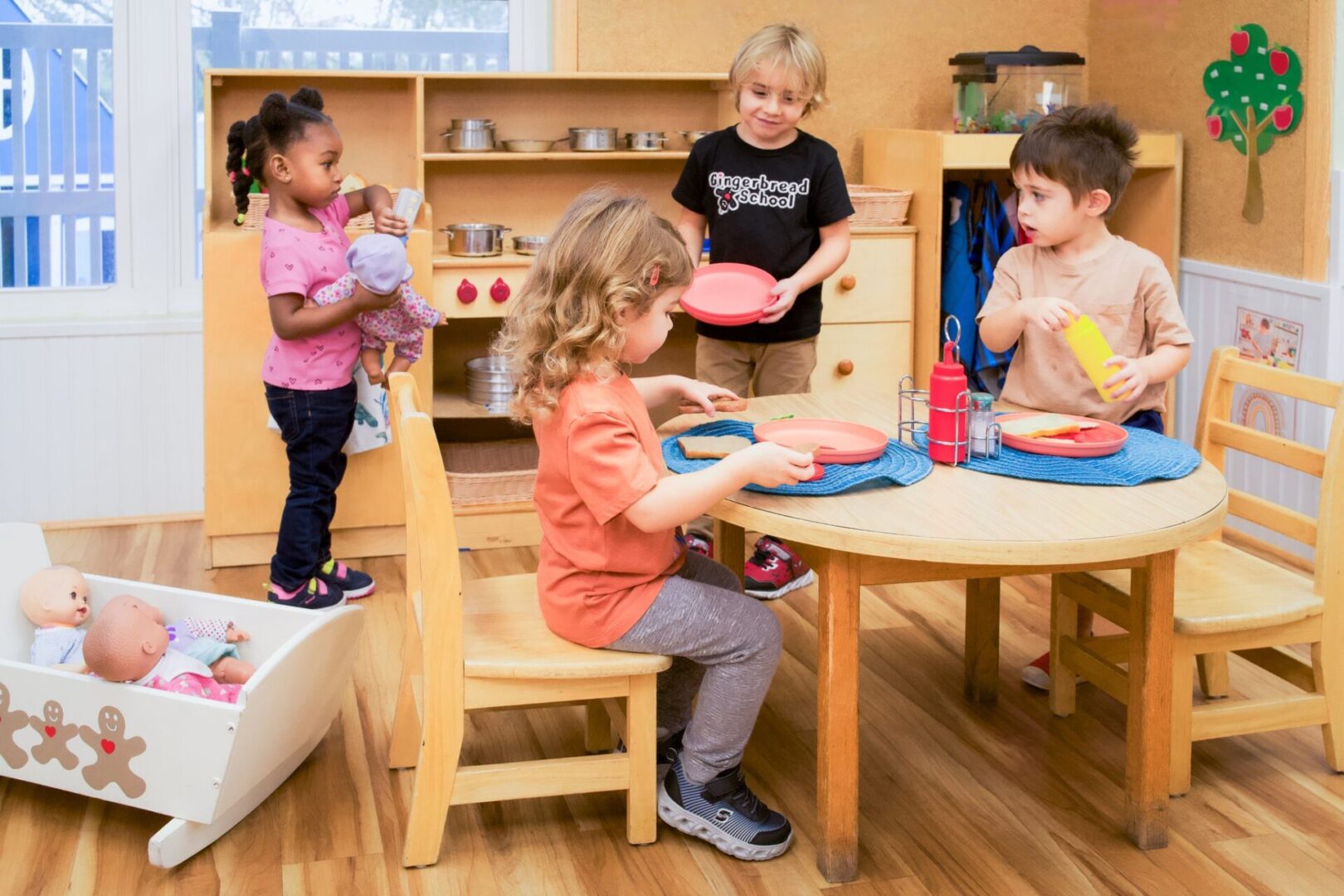Our Philosophy: A Nurturing & Engaging Approach to Early Learning
At Gingerbread Preschool, we take a balanced, child-centered approach that nurtures creativity, confidence, and social-emotional growth. Our philosophy blends structured learning, hands-on exploration, and play-based experiences, creating an engaging and enriching environment where every child thrives. We recognize that each child is unique, and by fostering critical thinking, collaboration, and independence, we prepare children for kindergarten and lifelong learning.
✔ Holistic Development - We support cognitive, emotional, social, and physical growth through interactive, hands-on experiences that inspire curiosity.
✔ Play-Based Learning - Our approach encourages creativity, problem-solving, and exploration in a natural, engaging way that makes learning fun.
✔ Social-Emotional Growth - We teach self-regulation, teamwork, and communication skills, helping children develop meaningful relationships and a sense of belonging.
💡 At Gingerbread Preschool, learning extends beyond academics-we shape confident, compassionate, and resilient learners who are prepared for success in school and life.

Child-Centered Environments & Familiar Routines
At Gingerbread Preschool, we create an engaging, developmentally appropriate environment where children explore, discover, and thrive in a space designed from their perspective.
A Nurturing & Safe Learning Environment
✔ Designed for Exploration – Our classrooms spark excitement and curiosity, encouraging children to try new things and learn through hands-on activities.
✔ Structured Yet Flexible – Clearly defined learning centers help children navigate their environment, select activities, and build independence.
✔ Safety & Cleanliness First – We maintain strict health and safety protocols, including daily sanitization, routine playground inspections, and janitorial services.
✔ Encouraging Choice & Engagement – Children benefit from autonomy in learning, making choices that enhance engagement and focus in structured activities.

Why Accreditation Matters for Your Child
At Gingerbread Preschool, our accreditation and safety standards ensure a nurturing, developmentally appropriate learning environment.

Meet Our Dedicated Teaching Team
Our passionate educators foster creativity, problem-solving, and social-emotional growth in engaging, structured classrooms that inspire learning.
Intentional Classroom Design & Predictable Routines
Our child-centered classrooms support critical thinking, problem-solving, and social-emotional development through engaging learning centers and a balanced daily schedule.
Interactive & Evolving Learning Centers
✔ Hands-On Learning – Children problem-solve, create, and explore through interactive experiences.
✔ Themed Learning Spaces – Year-round evolving centers with materials matching classroom themes.
✔ Diverse Learning Areas – Each classroom features engaging centers for art, music, literacy, and play.
- 🗣 Language
- 🏗 Construction
- 🎭 Dramatic Play
- 🎨 Art
- 🔬 Discovery
- 🎵 Music
- 🤲 Sensory & Manipulatives
A well-designed preschool fosters curiosity, independence, and a lifelong love of learning!
